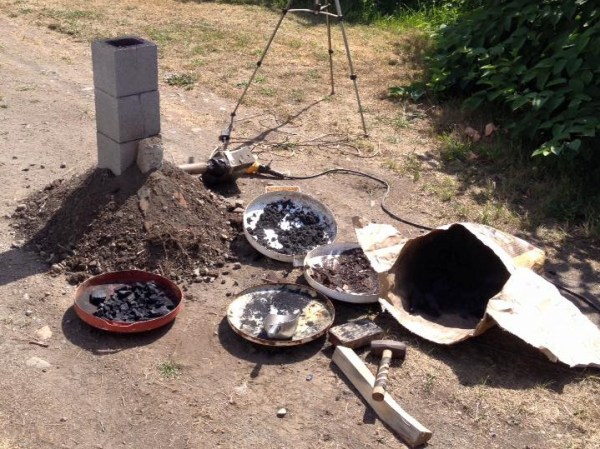[Chandler Dickinson] did his monthly sweep of the floor in his blacksmith’s shop when it occurred to him that all that metal dust had to go somewhere, didn’t it? So he did the only reasonable thing and made a crude foundry out of cinder blocks, melted his dirt in it, and examined what came out the other end.
His first step was to “pan” for steel. He rinsed all the dirt in a bucket of water and then ran a magnet at the bottom of the bucket. The material that stuck to the magnet, was ripe for reclaimation.
Next he spent a few hours charging a cinderblock foundry with coal and his iron dust. The cinderblocks cracked from the heat, but at the end he had a few very ugly brittle rocks that stuck to a magnet.
Of course there’s a solution to this non-homogenous steel. As every culture with crappy steel eventually discovered, you can get really good steel if you just fold it over and over again. So he spend some time hammering one of his ugly rocks and folding it a bit. He didn’t get to two hundred folds, but it was enough to show that the resulting slag was indeed usable iron.
He did a deeper examination of the steel last week, going as far as to etch it, after discovering that the metal sparked completely differently when sanded on one side versus the other. It definitely needed work, but all seemed to have worked in the end.


















